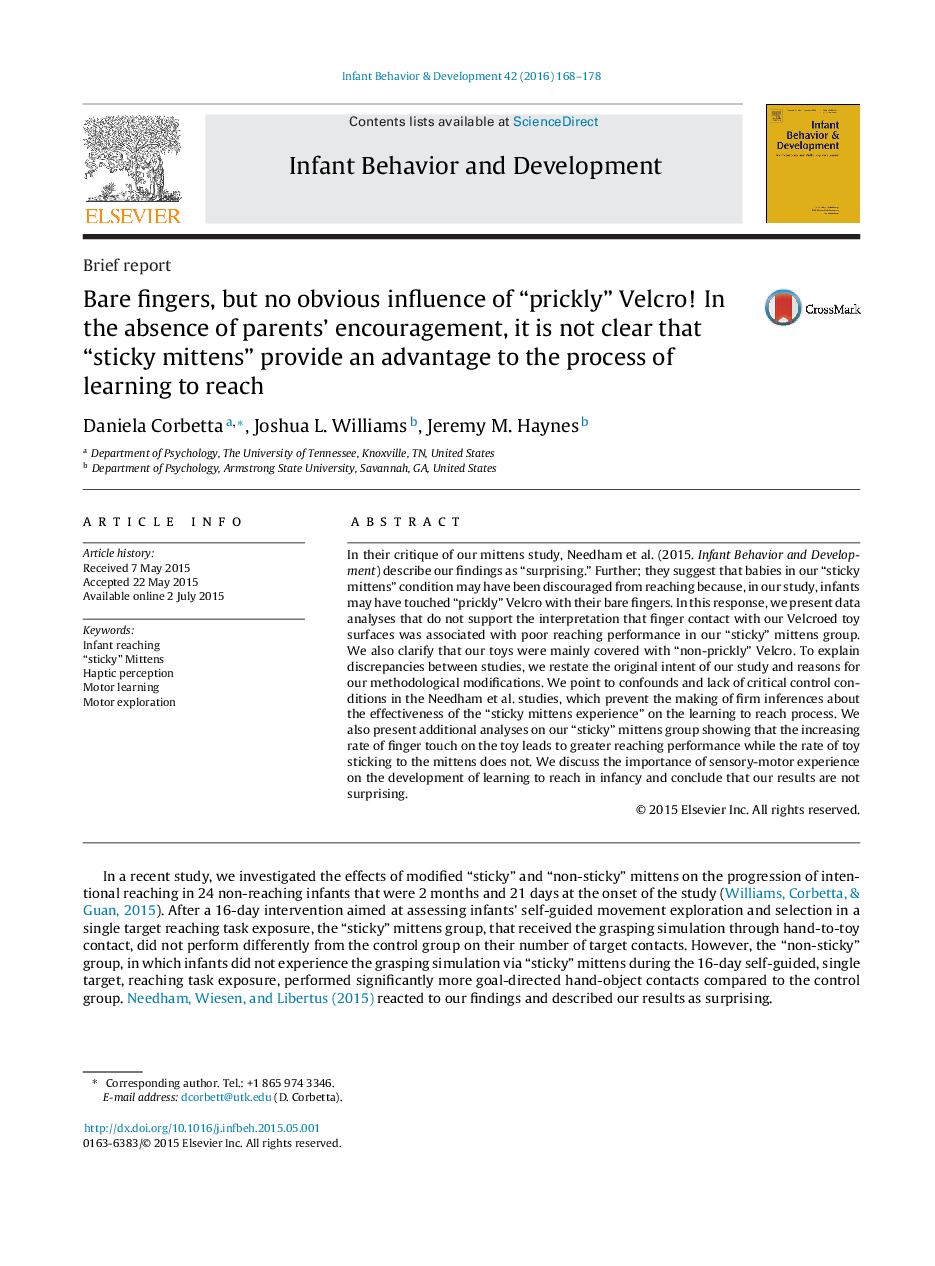| کد مقاله | کد نشریه | سال انتشار | مقاله انگلیسی | نسخه تمام متن |
|---|---|---|---|---|
| 917154 | 1473418 | 2016 | 11 صفحه PDF | دانلود رایگان |

• Bare fingers contact with “prickly” Velcro does not hamper reaching performance.
• Toy sticking to the mittens does not correlate with reaching performance.
• Bare fingers contact with the toy surface is positively correlated with reaching performance.
• Direct haptic contact with the toy may matter more for learning to reach than wearing “sticky” mittens.
In their critique of our mittens study, Needham et al. (2015. Infant Behavior and Development) describe our findings as “surprising.” Further; they suggest that babies in our “sticky mittens” condition may have been discouraged from reaching because, in our study, infants may have touched “prickly” Velcro with their bare fingers. In this response, we present data analyses that do not support the interpretation that finger contact with our Velcroed toy surfaces was associated with poor reaching performance in our “sticky” mittens group. We also clarify that our toys were mainly covered with “non-prickly” Velcro. To explain discrepancies between studies, we restate the original intent of our study and reasons for our methodological modifications. We point to confounds and lack of critical control conditions in the Needham et al. studies, which prevent the making of firm inferences about the effectiveness of the “sticky mittens experience” on the learning to reach process. We also present additional analyses on our “sticky” mittens group showing that the increasing rate of finger touch on the toy leads to greater reaching performance while the rate of toy sticking to the mittens does not. We discuss the importance of sensory-motor experience on the development of learning to reach in infancy and conclude that our results are not surprising.
Journal: Infant Behavior and Development - Volume 42, February 2016, Pages 168–178